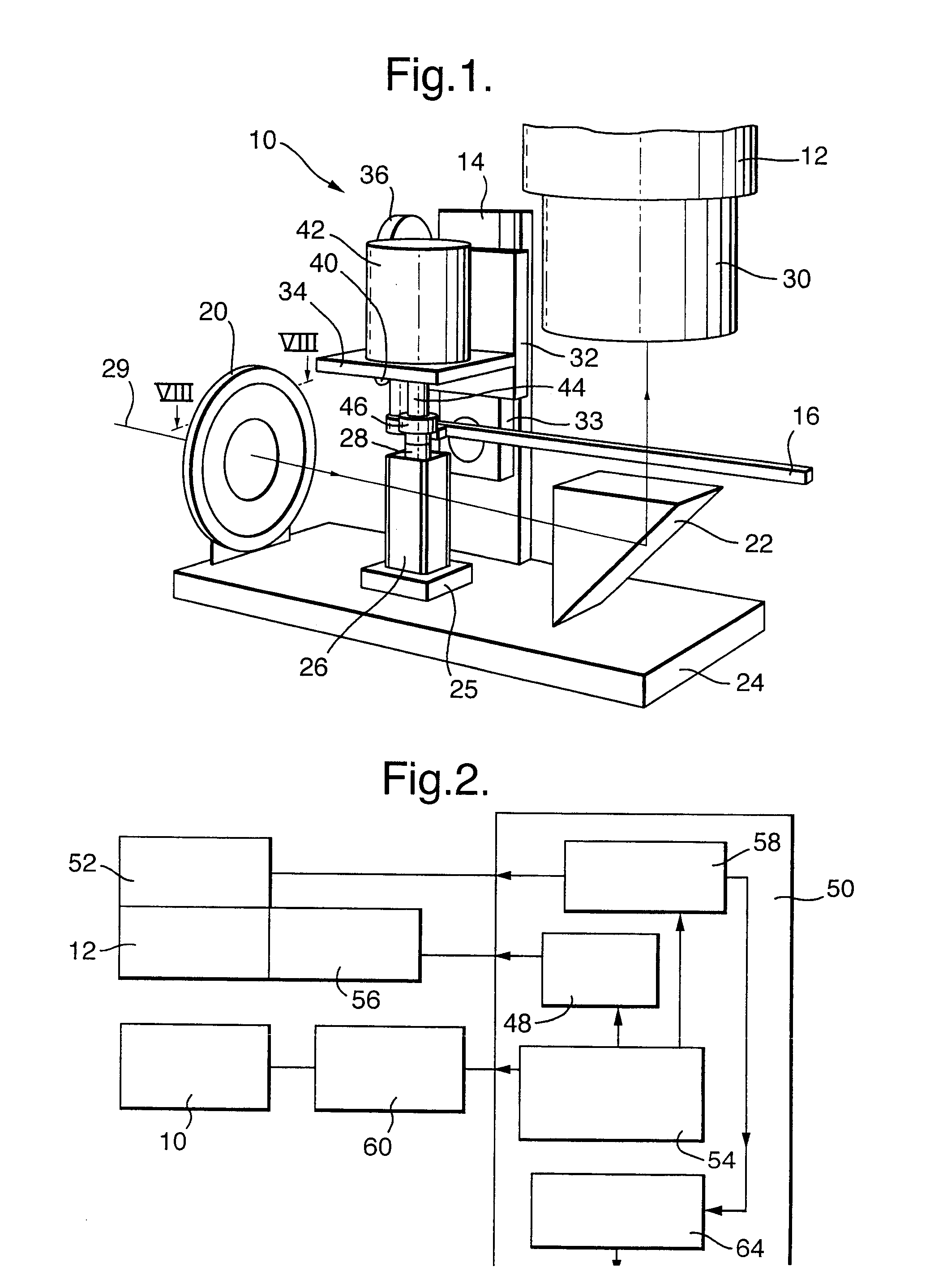Rotary stage for imaging a specimen
a rotary stage and specimen technology, applied in the direction of instruments, material analysis, measurement devices, etc., can solve the problems of affecting signal quality, difficult to introduce samples into hollow cylindrical tubes, and severe constraints on the maximum size of specimen tubes, so as to avoid specimen deflection, improve the accessibility of specimen holders, and facilitate specimen positioning
- Summary
- Abstract
- Description
- Claims
- Application Information
AI Technical Summary
Benefits of technology
Problems solved by technology
Method used
Image
Examples
Embodiment Construction
[0028]FIG. 1 shows optical imaging apparatus in the form of an OPT scanner comprising a rotary stage 10 and a long working distance or dissecting microscope 12, separate from the rotary stage 10. The rotary stage 10 has a support 14, a pivotally mounted lever 16, an iris and optical diffuser 20, and a quartz prism 22. The support 14, iris and diffuser 20, and prism 22 are fixed to a base 24 of the stage 10, as is a holder 25 for receiving a transparent chamber 26, or cuvette, of a generally cuboid shape. The cuvette 26 contains a fluid with suitable optical properties for imaging a specimen 28 suspended within the cuvette, an appropriate fluid being a mixture of benzyl alcohol and benzyl benzoate. This apparatus can be used for brightfield, darkfield and fluorescence imaging but is particularly appropriate where a three dimensional (3D) image of the specimen is created from a series of images taken at different angles, and for specimens too large to be imaged by confocal microscopy....
PUM
| Property | Measurement | Unit |
|---|---|---|
| angle | aaaaa | aaaaa |
| diameter | aaaaa | aaaaa |
| width | aaaaa | aaaaa |
Abstract
Description
Claims
Application Information
 Login to View More
Login to View More - R&D
- Intellectual Property
- Life Sciences
- Materials
- Tech Scout
- Unparalleled Data Quality
- Higher Quality Content
- 60% Fewer Hallucinations
Browse by: Latest US Patents, China's latest patents, Technical Efficacy Thesaurus, Application Domain, Technology Topic, Popular Technical Reports.
© 2025 PatSnap. All rights reserved.Legal|Privacy policy|Modern Slavery Act Transparency Statement|Sitemap|About US| Contact US: help@patsnap.com



